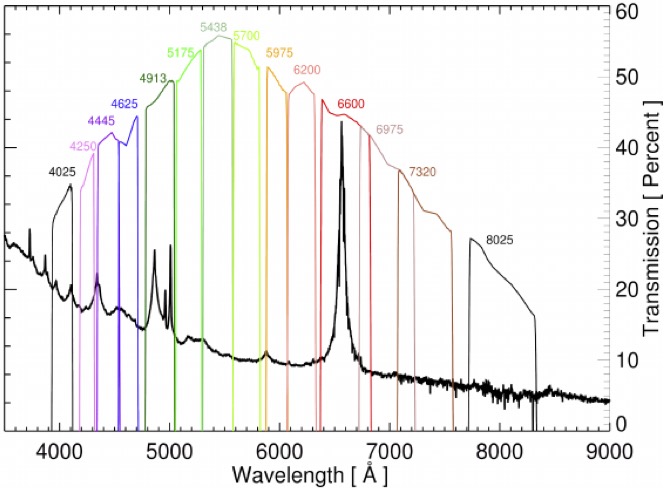Quasar photometry
We regularly monitor specific regions of the sky with high cadence across the optical band to monitor quasars and their vicinity. We use a special set of intermediate-band filters (see figure below) which are designed to isolate spectral ranges which are emission-line rich and those whose signal is dominated by continuum emission. High-cadence monitoring is used to search for light echoes between the different bands. We analyze such echoes in a way which is akin to that used by radars, which allows us to place constraints on the innermost environs around supermassive black holes, which are too small to be directly imaged, even by the largest and most advanced telescopes. This study has implications for the rate by which supermassive black holes in galaxy centers grow with cosmic time, and the means by which accretion of material onto these objects pursues.

The figure shows a partial set of intermediate-band filters that are installed, and are used to monitor the sky in specific colors. Overlaid is a typical (low redshift) quasar spectrum showing continuum emission with broad emission lines. Specific bands can be used to monitor emission line variations while other bands can be used to probe nearly pure continuum emission of the objects. Typical transmission levels (in per cents) are shown, which include the CCD efficiency.
